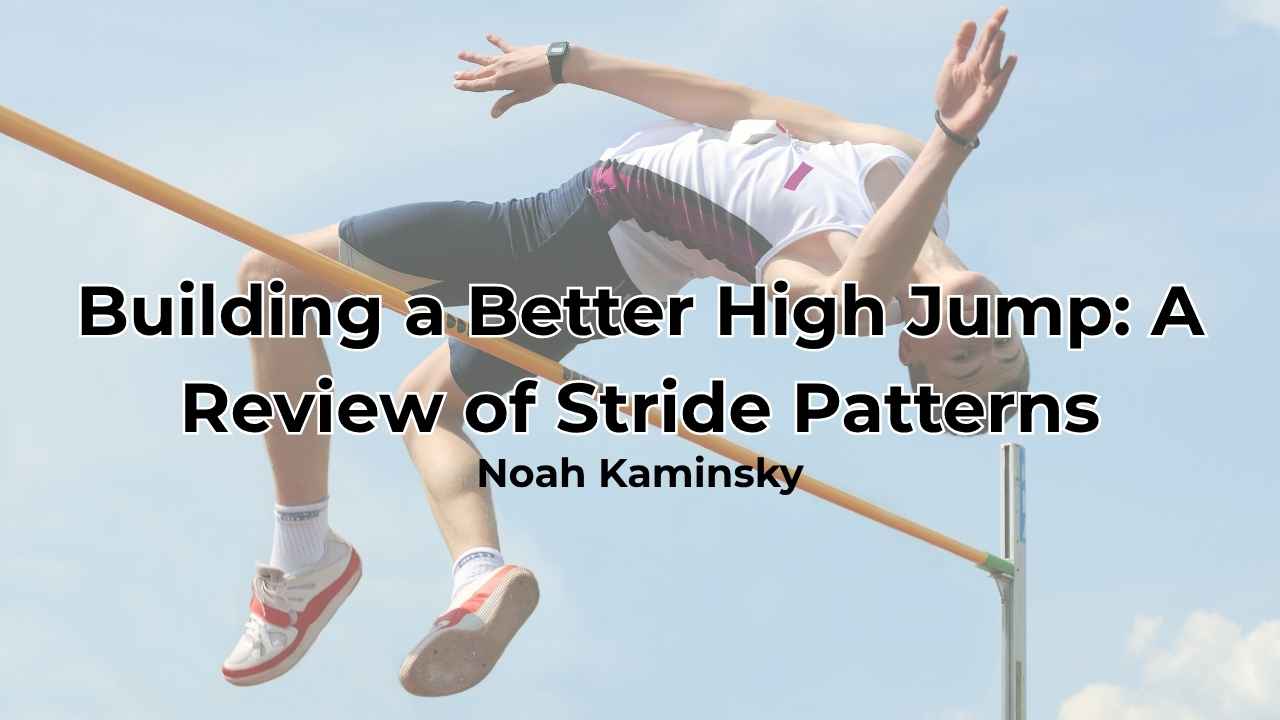[mashshare]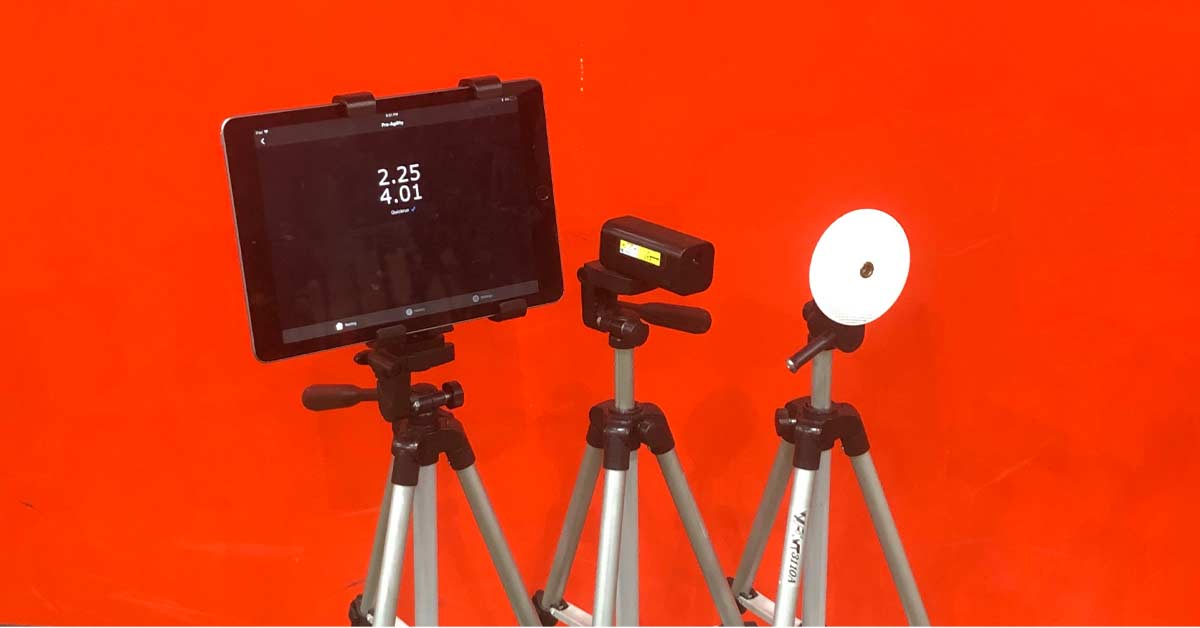
Coaches who are looking for a sports timing system and have a tight budget may find the Dashr system a good fit for their needs. In this guide, I cover what the Dashr system is, and what it can and can’t do. I use an array of timing systems, including MuscleLab by Ergotest, Swift Performance, and, of course, Freelap Timing. Each system has its strengths and weaknesses, but if you are looking for a simple system that can test athletes’ speed, you likely want to use Dashr.
In this article, I also repeat the importance of protocols and knowing when a system is limited based on application. Dashr is not for everyone, but if you are looking to time a 40-yard dash or do simple fly testing, it’s both practical and efficient enough for you.
What the Dashr Can and Can’t Do
If you are familiar with the old Brower timing system, you will know the limits of conventional timing gates and the system’s accuracy. The main difference between basic timing gates and Dashr is that Dashr has a correction formula and sampling system to ensure the motion of a human body passing by is accurate and precise. The rest of the benefits—like RFID tagging of athletes, Bluetooth and cloud synchronization, and leveraging a smart device—are all expected iterations of technology and features.
The main difference between basic timing gates and Dashr is that Dashr has a correction formula and sampling system to ensure the motion of a human body passing by is accurate & precise. Share on XDashr uses a protocol similar to the one created by Fusion Sport. This means it uses an algorithm to pinpoint the passing of an athlete’s center of mass, and it doesn’t just rely on a runner tripping a beam with an arm or leg. I could get into more details about electronic timing, but I really just want to explain that the Dashr system is better than Brower in regard to its data. It’s not just an updated timing gate system with current technology features.
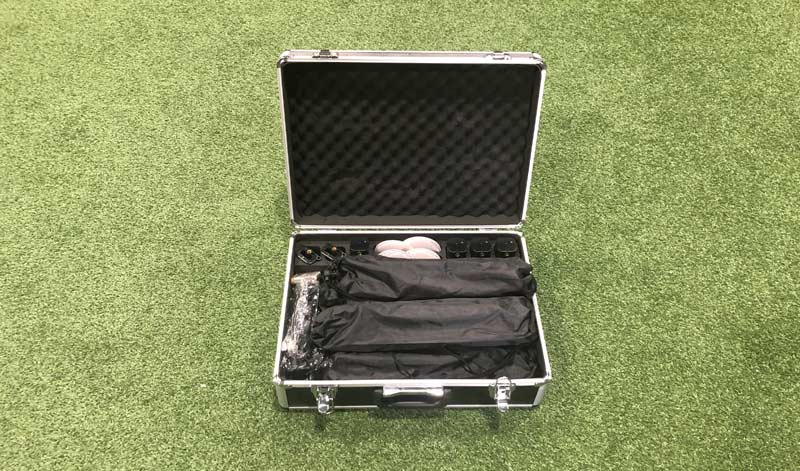
Dashr is not a continuous laser timing system that tracks velocity throughout the repetition. When you think timing gates, you purposely slice the length of the run into time and distance intervals, usually by 10 yards or meters. Coaches use flying sprints in order to estimate an athlete’s peak velocity, and while that method is practical, it’s far from perfect.
Also, it’s important to know that crossing a beam during the start can inflate times. Over and over again, I see some ridiculous first splits because the coach allows a very lax starting protocol, either with agility or linear speed testing.
Finally, while the product can be used for combine testing, the product is really useful for internal testing for several reasons. First, the synchronization of video and other sensors is a nightmare, but it can be done. If you want pure synchronization off all data points, work with Dartfish and MuscleLab. If you are running a conventional NFL-like combine, Dashr can deliver. Due to the fact the system has an API to feed the data to another web software product, coaches likely want to use the system with their athlete management system or similar.
Dashr is excellent for those who want to get started with timing, but you may need other options if you need to perform deep analysis with elite athletes, says @spikesonly. Share on XI realize a few coaches will bring up JAWKU or video timing apps, and I state my case later in the conclusion why I am not a fan. The goal of technology is to have great design and vision to make the process easier, faster, and more accurate. Most coaches think technology is about how cheap the process can be, but if you’re penny wise and pound foolish, Dashr is a good compromise. You can get started with timing for under $600 and that is a great deal. Remember, you get what you pay for, so Dashr is excellent for those who want to get started with timing, but you may need other options if you need to perform deep analysis with elite athletes.
The Best Use Cases for Dashr
If you want to time simple change of direction and linear speed and stick with the essentials, you can do just fine with Dashr. If you are looking for something in particular with very high precision or custom-made, I don’t recommend using a timing gate system without true motion detection or continuous laser. If you want to get a 40-yard dash with splits or 5-10-5, you will be more than satisfied. I do not recommend Dashr for hurdles, as my method in automated hurdle touchdown times with Freelap is too convenient and streamlined. Also, if you are trying to do horizontal jumps or pole vault, use MuscleLab and get the job done the right way with continuous velocity measures and ground contact times.
Combines or large group testing are great for indoors, as the system will find extreme conditions a challenge, but the company found a workaround with a visor adaptor for outdoor assessment. The heat shield is an extra accessory device that enables the equipment to be effective in the direct sun and heat, and you can purchase it separately. The RFID solution for tracking performance with each athlete, standard in nearly all timing systems now, is affordable and practical.
I don’t use the RFID system myself, as I don’t do combine assessments anymore, but I witnessed it in action, and it did what was expected. If you work with large groups and are by yourself, you should be able to use the RFID reader to help act as an assistant coach. You can get by perfectly fine without the RFID with just conventional clipboards or tablets, but I would make a case that if you are trying to keep workflow super-efficient, you need to leverage the RFID because it automates everything.
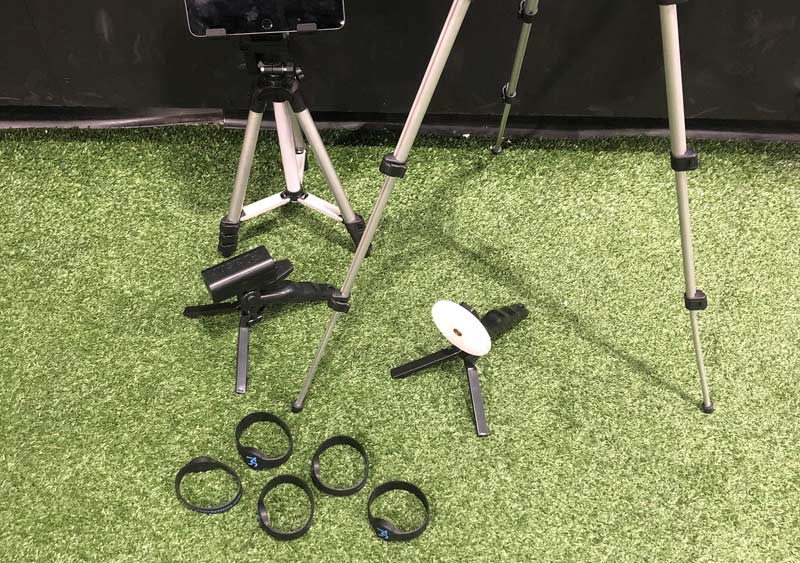
Coaches will ask about other use cases outside of American football or track and field, such as basketball and baseball. Those sports have linear sprints and some patterned “agility” tests that are easily captured, but due to the use of beam-based timing, a summary number is all you can get. The Dashr system allows for a way to test ice hockey and other short speed tests, but keep in mind Bluetooth ranges are for sprints, not distance events like obstacle courses and cross-country competitions.
Do not use Dashr as a track & field timing system at any distance. It’s designed for sport timing testing, not evaluating actual sprint events like the 100-meter dash, says @spikesonly. Share on XI will say this with a firm warning: Do not use Dashr as a track and field timing system at any distance. The product is designed for sport timing testing, not evaluating actual sprint events like the 100-meter dash. If you want professional timing for sprints, you need to use FinishLynx or Omega timing. Swimming is an obviously different sport, as touchpads are used to get splits and stop the clock, but it’s amazing how many schools buy the wrong equipment.
Setting Up the System for Perfect Timing
If you have already visited the Dashr website and read the set-up guide, this section still matters more than you think. You can use both iOS and Android devices with Dashr, but I recommend a refurbished Samsung smartphone and not Apple products because it allows a designated controller to run the system. The Android versions of hardware are more open, thus allowing a better connection to the Dashr system. I can’t commit to or anticipate how Apple will change in the near future, so for now, it’s fine to use a less-expensive model of a smart device to run the timing system.
Here is a short list of priorities when timing athletes. It’s possible to do a small group of athletes alone, but for larger testing groups, try to have as much help as possible. Even a parent who keeps a line organized is a godsend with youth athletes, as they are always looking over your shoulder after a sprint to get their time.
-
- Have a roster of athletes first, so you can enter the names into the Dashr system.
-
- Use large construction cones to organize the flow of the testing so you can video the sprints.
-
- Project your voice or use a Bluetooth PA system to instruct athletes and guide them on the tests.
-
- Have the times relayed far away from the timing system if you can, as this a major benefit to everyone involved.
-
- Integrate your Dashr with an athlete management system such as CoachMePlus.
- Practice the testing over and over in the same conditions beforehand and have a video camera as a backup system.
If you use Chromecast, you can transmit times to a flat-screen TV if you are indoors. Speaking of indoors, the best option for timing will always be inside rather than outside. Indoor venues are constantly dry, near room temperature, and have no direct interaction with the sun, for the most part. Viewing the results isn’t hard outdoors, as the system displays white text on a black background. If you have the option of testing indoors, though, you should do so.
The tripods are light, but they are prone to getting blown over if you live in a windy area. Most large timing gates are heavy enough to be stable, but the only issue with tripods besides taking up space or lanes is having to deal with wind from time to time. So far, I have yet to experience a tripod getting knocked over by Mother Nature. In the instructions, the manufacturer does cover how to position the product in the sun, and (as mentioned previously) they also provide a visor accessory.
Starting a sprint is a universal challenge for technology. I think I may have covered first motion a dozen times, and it’s worth repeating a dozen more. If you screw up the start, you produce inflated and fictitious times, and athletes will suffer in the long run when compared to normative data and/or wanting to track improvement. If you plan to do a start with the body breaking a beam, move the beam to the closest point possible of the limb that will trigger first. It’s better to have slower and more valid times and be consistent than think your first 10 meters or yards is world-class.
Video 1. Having an athlete actually standing in the path of the beam allows first motion to work rather well, but again, some motions have inefficient displacements and thus don’t represent the actual speed of an athlete.
First movement is rather reliable when doing a three-point start, but with standing starts, it can be a crapshoot. Experiment to find the most reliable starting method, but I recommend one that uses a position that trips the fastest initiation possible. It will represent the true initiation or displacement of the body better and, over time, reward efficient starters. Having an athlete “starting” in the beam path is fine, but make sure you have a protocol that doesn’t punish an athlete who has a unique routine for getting in and out of the position.
Running through the line is the source of my biggest gripe, as athletes tend to pick up bad habits from what they see. These are often early celebrations or slowing down at the line because they think they are at the Olympics and running rounds or something. Get the athletes to run through the line by placing visual cones a few meters beyond the measured area so they know to sprint past the gates and not slow down to the gates.
Get the athletes to run through the line by placing visual cones a few meters beyond the measured area so they know to sprint past the gates and not slow down to the gates. Share on XIt’s bizarre, really, to see so many kids and even elite athletes slow down right before the line. On the other hand, the start always seems to be an issue with the opposite problem. By this, I mean that everyone tries to cheat or get the best start, so we as coaches need to put our efforts in finishing. Again, these are my observations, but “run through the line” can be heard at nearly every track around the country.
My next-to-last recommendation for the system is rather boring, but still important. You need to do a rehearsal of the timing tests three times after you think you’ve got it working. All tests must be reviewed, since every movement has idiosyncrasies. Read the combine PDF provided by Dashr, as it has a nice troubleshooting guide. Also read their setup page over and over.
Finally, either post or keep the laminated cards included in the system with you during the tests just to serve as a reminder. You can place the cards on the back of a clipboard or use a ring to organize them if you decide not to go with manual entry.
Data Export and Data Analysis
The one area that always tends to be glossed over is the workflow after testing. Again, the reason many coaches like Dashr is that the setup is easy: Even if you don’t use it frequently, it still works great because the setup is quick. If you are testing athletes with other athletic performances such as jumps, throws, and lifts, I recommend you read this article on assessment.
The No. 1 mistake I see with exporting data from any timing system is that coaches forget that if you don’t video the run, the information is just a summary of point A to point B. Second, if you are looking to time athletes, you need to make sure the athletes are aware of their best times and are putting in an honest effort. Athletes in the U.S. will want to know their 40-yard dash time, but they need to know their flying sprint times as well.
The #1 mistake I see with exporting data from any timing system is coaches forgetting that if you don’t video the run, the information is just a summary of point A to point B. Share on XI wrote a short blog on converting split times into meters per second or miles per hour years ago, and I see a huge adoption pattern with coaches telling athletes how fast they can run, thanks to GPS and sporting events on TV broadcasting athlete velocity. Coaches like Graham Eaton have created T-shirts to celebrate different “speed clubs,” but due to the intervals of miles per hour, it’s a very slow process for earning the upgraded shirt colors and velocities. In short, you need to be careful what you do with the data since it’s not just uploading to a Google Drive or similar.
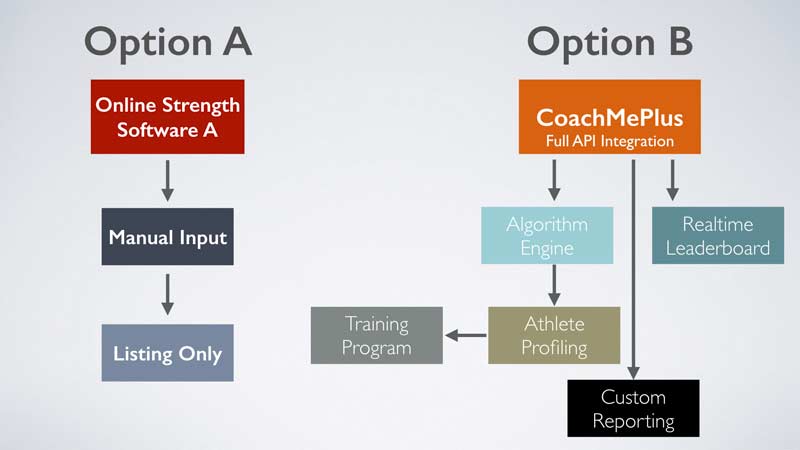
Dashr having an API allowed small companies like Drillstack to connect to speed data immediately during training or testing. Unfortunately, the Drillstack product is just for displaying combines and has no integrated training software to actually apply the information gathered. CoachMePlus is a full suite used by top testing clients, so if you time with Dashr, you can relay the data into custom leaderboards or similar. In the long run, you want to collect data and see if something pops up. True, you can take data from Dashr and dump it into Dropbox or post a table like a final exam grade to a class, but it’s about extracting more from the data.
Most experienced coaches want to see athletes sorted by ascending or descending order based on how they fare overall, or by specific columns or scoring metrics. I always want to pursue top speed, as acceleration will incubate slower from tagging along if you are strength training or doing resisted sprints from time to time. You can connect the data collected and use the Dashr’s added value analysis, called the EPIC Index, if you use Boyd Epley’s formulas. The EPIC Index originated years ago and was way ahead of its time, and we should give credit to the University of Nebraska for adding analytics to strength and conditioning. While lots of Olympic training centers are doing equally impressive analysis, the U.S. was typically not given credit for being progressive and deserves some accolades.
Why Dashr Is Great for High School Strength Coaches
If you run a private facility, you can function well with Dashr, but keep in mind the soul of the product is to make high school timing affordable for the masses. Dashr does what it promises, but if you are looking to take timing to the next level, I recommend trying another system. What I don’t recommend is using a wearable device or open source product because it’s cheaper. When you are in a race to the bottom with price, you must realize you give up a lot of function and data integrity because compromises were made to make it inexpensive.
If you run a private facility, you can function well with Dashr, but keep in mind the soul of the product is to make high school timing affordable for the masses, says @spikesonly. Share on XDashr delivers a better solution for youth sports than Brower, but that is only for testing. I still recommend Freelap timing for track coaches and speed training, as it takes up less real estate on the track and can test multiple athletes at the same time. My last recommendation is to experience the benefits of Dashr by checking out this review by Shane Davenport, as it does a wonderful job outlining everything you need to know. If you are in a bind and have limited funds, Dashr functions, and that’s why SimpliFaster’s store sells it.
Since you’re here…
…we have a small favor to ask. More people are reading SimpliFaster than ever, and each week we bring you compelling content from coaches, sport scientists, and physiotherapists who are devoted to building better athletes. Please take a moment to share the articles on social media, engage the authors with questions and comments below, and link to articles when appropriate if you have a blog or participate on forums of related topics. — SF
[mashshare]

